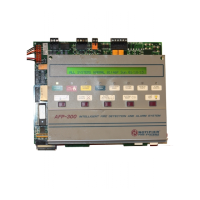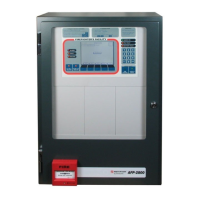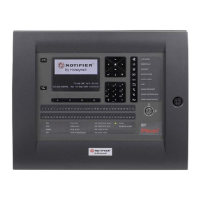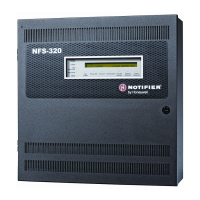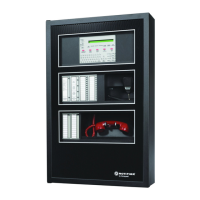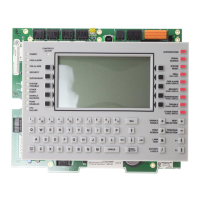AFP-3030 Installation Manual — P/N DOC-01-037:B 25/08/2016 30
Section 4: Testing the System
4.1 Operational Checks
Between formal periodic testing and servicing intervals, the following operation checks should be
performed monthly.
Check that the green SYSTEM NORMAL LED lights.
Check that all status LEDs are off.
Press and hold the LAMP TEST key. Verify that all LEDs and all LCD display segments work.
Before proceeding: a) notify the fire department and the central alarm receiving station if
transmitting alarm conditions; b) notify facility personnel of the test so that alarm sounding
devices are disregarded during the test period; and c) when necessary, disable activation of
alarm notification appliances and speakers to prevent their sounding.
Activate an Initiating Device Circuit using an alarm initiating device or an addressable
initiating device on the SLC and check that all programmed active notification appliances
function. Reset the alarm initiating device, the control panel, and any other associated
equipment. In voice alarm applications, confirm that the proper tone(s) and/or messages sound
during alarm conditions. Select the paging function and confirm that the message can be heard
in the affected fire zones. Repeat the above step with each Initiating Device Circuit and each
addressable device.
Zero Ohms to ground will cause a ground fault.
On systems equipped with a firefighter’s telephone circuit, make a call from a telephone circuit
and confirm a ring indication. Answer the call and confirm communication with the incoming
caller. End the call and repeat for each telephone circuit in the system.
Remove AC power, activate an Initiating Device Circuit through an alarm initiating device or
an addressable initiating device on the SLC, and check that programmed active notification
appliances sound, and alarm indicators illuminate. Measure the battery voltage with
notification appliances active. Replace any battery with a terminal voltage less than 21.6 V DC
and reapply AC Power.
Return all circuits to their pretest condition.
Check that all status LEDs are off and the green POWER LED is on.
NOTE: SLC Resistance Values:
The total DC resistance of the SLC pair cannot exceed 50 ohms.
For instructions on how to measure the total DC resistance of a populated SLC pair, refer to the
“Measuring Loop Resistance” section of the SLC Wiring Manual (P/N 51253).
The minimum DC resistance between conductors of an unpopulated SLC pair cannot be less than
1 K ohms.
Measure DC resistance on an unpopulated loop as shown in Figure 4.1 on page 31.
NOTE: The battery test requires fully charged batteries. If batteries are new or discharged due
to a recent power outage, allow the batteries to charge for 24 hours before testing.

